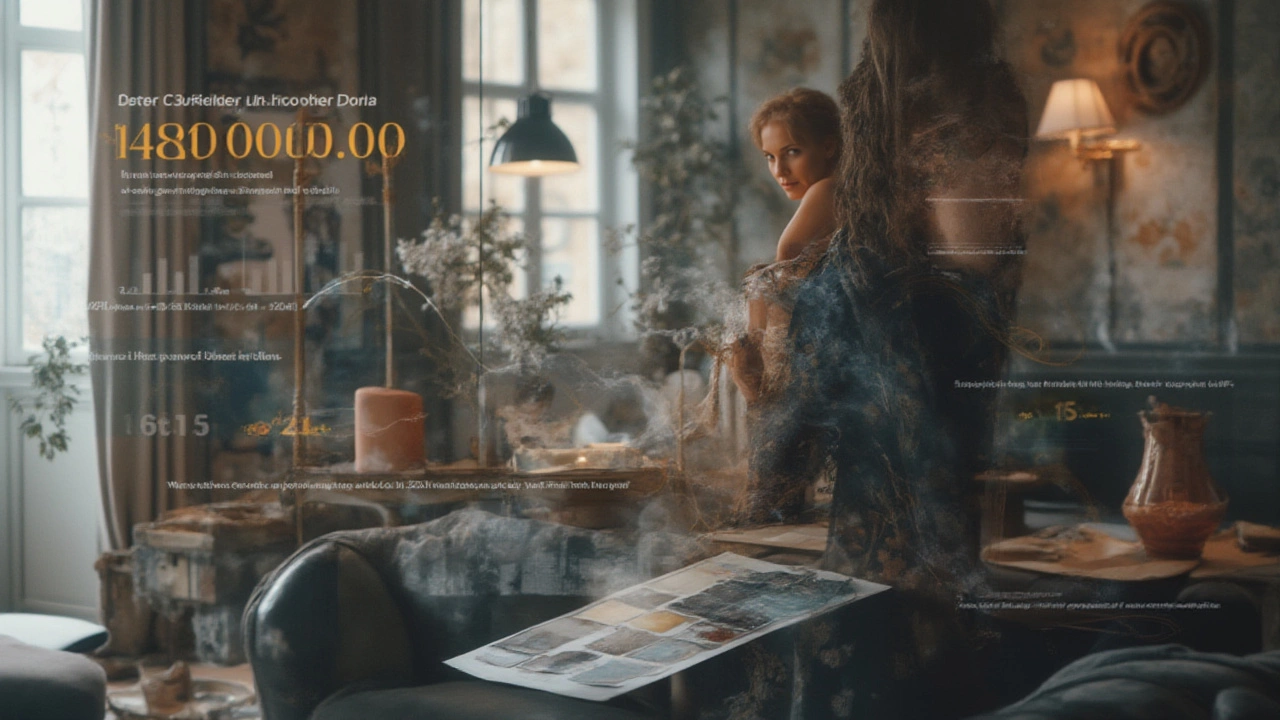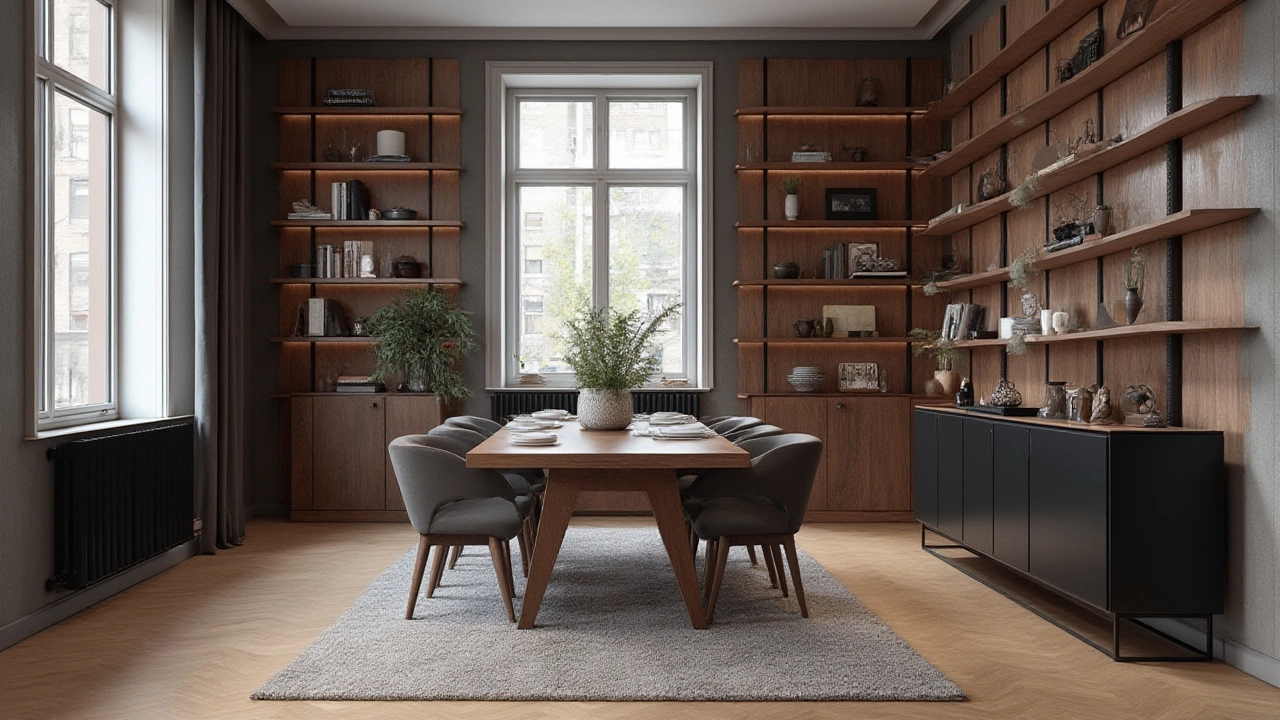Remember when nearly every design magazine screamed for white-on-white rooms and pale Scandinavian wood? That was, what, three years ago? Now, things are shifting fast. In 2024, dark furniture is stepping quietly but boldly into the spotlight, shaking up living rooms, bedrooms, and even kitchen spaces with a moodier, more dramatic touch. Gone are the days when dark furniture screamed old-fashioned. Now, it's showing up in homes from Pinterest-worthy high-rises in Cape Town to cozy coastal hideaways in Durban, and it’s making some serious waves.
Why Dark Furniture Is Making Waves in 2024
For the longest time, the rule seemed to be "keep it light to keep it fresh." But now, more people are tired of constantly cleaning every little smudge or scratch off pale cabinets and couches. It’s not just about dirt, though. There’s research showing our homes impact how we feel, and darker hues can give us a sense of security and comfort that many are craving after chaotic global events. You can actually spot this trend all over Instagram—hashtags like #darkfurniture and #moodyinteriors have blown up, with over 450,000 posts between them by March 2024.
Paint brands such as Dulux have reported a 36% increase in requests for deeper, darker shades for both walls and trims in the first half of 2024. Furniture retailers like Weylandts and Superbalist are expanding their walnut, ebony, and blackwood ranges, and several product lines are selling out faster than their lighter counterparts. To put that into perspective, dark furniture accounted for about 47% of living room furniture sales in South Africa during the February-June 2024 window, up from just 29% in 2022.
This comeback isn’t just nostalgia. It’s about breaking rules, mixing influences from 1970s chic, art deco, and even African heritage styles, which have always favored warmth and richness. That’s why top designers like Eloise Pienaar and Mpho Lukhele have started weaving mahogany, dark-stained oak, and even deep charcoal velvet into their projects and Instagram reels.
The Pros and Cons of Embracing the Dark Side
Let’s get real: dark furniture isn’t for everyone or every home. It comes with a personality, and that can be a blessing or a challenge, depending on what you’re looking for. On the plus side, these pieces are surprisingly versatile. A walnut sideboard can feel classic in one room and cutting-edge in another, just by playing with the lighting. And scratches? Dings? Most dark woods hide wear and tear like champions, much better than those all-white or beech finishes.
But here’s where it gets tricky: dark furniture can devour natural light if you don’t balance it out. Small spaces might feel even tinier if you’re not careful, and an all-dark setup can look a little goth if you miss out on pops of color and texture. From a maintenance perspective, fingerprints and dust show more on glossy black finishes than you’d think. It’s not a free pass to forget the vacuum.
A survey from House & Leisure (April 2024) polled 600 South African homeowners on their biggest worries about shifting to darker décor. About 61% worried it would make their spaces feel closed-in. But among those who made the switch, 73% said the room felt “richer” and “more inviting” once they paired dark furniture with the right paint and fabrics. Here’s a quick table to weigh the main pros and cons:
| Pros | Cons |
|---|---|
| Hides scratches and minor wear | Can show dust, fingerprints |
| Creates a cozy, grounded feel | May make tiny rooms feel smaller |
| Adds drama and depth | Needs good lighting & color balance |
| Feels timeless paired with the right décor | Can overwhelm if overused |
In short, yes—dark furniture needs a little extra planning. But the payoff can be stunning.

Real Homes, Real Inspiration: How People Are Using Dark Furniture
If you still picture dark furniture as those heavy, dust-collecting cabinets your grandma kept in the corner, you’re missing out. Today’s designs are sleek, sculpted, and made for showing off. Think statement black coffee tables with smooth, rounded edges, midnight-blue velvet accent chairs lit by copper floor lamps, or chunky dark oak dining tables surrounded by cane-back chairs. They’re not old-fashioned—they’re show-stopping, with a hint of glam.
Over in Umhlanga, I visited a friend, Sam, who swapped out her entire living room for a mix of ebony and matte-black steel pieces last month. She paired the dark TV console with warm rattan baskets and a big, fluffy off-white rug. The windows have sheer linen drapes, so loads of sunlight pours in, bouncing off glossy green plant leaves. Her friends, who once teased her about the switch, now ask for tips every time they come by.
If your style is more vintage, there’s been this unexpected revival of dark-wood sideboards and display cabinets, especially with funky South African ceramics or even bold, modern art prints. These pieces are easier to find now, too—the local Facebook Marketplace is full of salvaged imbuia, meranti, and kiaat pieces, which look stunning once sanded down and polished. Some younger couples are even going straight for dark kitchen cabinetry, mixed with marble counters and loads of metallic hardware. They describe the vibe as "upscale restaurant"—but still homely.
Globally, you’ll spot big names like Kelly Wearstler and Nate Berkus posting about moody dining spaces and black walnut beds. Closer to home, Durban’s restaurants like The Chefs' Table have leaned into deep, dark woods and ambient lighting, tapping into this global trend and taking it a step further with an African twist—think handmade textured ceramics, woven baskets, and wall art in earth tones.
Tips for Styling Dark Furniture Without Overdoing It
So you’re itching to bring in a little drama, maybe a black bookshelf or that espresso-stained desk. But how do you keep your place looking elegant, not like Batman’s lair? Here’s my favorite game plan for making dark furniture shine—without letting anything get overwhelming.
- Light it up: Don’t rely on one sad overhead bulb. Use multiple lamps, wall sconces, or even fairy lights to bounce off the deep wood and create movement and warmth. Reflective surfaces (like metallic trays or mirrors) can help too.
- Mix and match: Pair dark wood with contrasting textures—think light linens, jute, or a big fluffy rug. Even a bold, patterned throw cushion on a dark sofa makes a difference.
- Break up the dark: If you’re putting a big dark table in the room, add lighter elements like pale vases, cream candlesticks, or fresh flowers.
- Show your personality: Don’t be afraid of art. Framed family photos, graphic prints or wall baskets keep things lively and personal, so the space never feels stuffy.
- Work with your space: In small rooms, keep your walls light. Soft white, warm beige, or blush work well to keep things bright yet cozy.
- Plants, always: Big leafy greens (like monstera or fiddle-leaf fig) just pop against dark furnishings, adding natural energy that feels fresh, not heavy.
If you love DIY, you can even upcycle lighter wood furniture by sanding and using a rich stain—just don’t forget to seal it (Durban air gets humid!). Mix clean lines with more ornate pieces—a streamlined table with a vintage chair, for example—to dodge that “catalogue showroom” feel. The key is contrast, and a bit of whimsy.

The Future of Dark Furniture: What the Experts Predict
Dark furniture isn’t just a passing phase for 2024—it’s getting baked into everything from fast furniture to luxury custom designs. Designers predict that dark tones will keep evolving, with new materials like blackened concrete, tinted glass, and ultra-matte metal joining the party. Instead of everything matching, folks are mixing deep blues, forest greens, and even chocolate browns in the same space. There’s a special appeal in how these elements age; dark woods pick up character with every scratch, building a patina that is uniquely yours.
Global sales stats bear this out, too. The Home Design Data Collective’s 2024 mid-year report found a 31% surge in dark tone furniture sales in English-speaking markets since January. The same report said 58% of shoppers under 35 picked dark color options for at least one large furniture item, which is up double from pre-pandemic habits. The why? Simple: people want their homes to feel safe, rich, and a bit mysterious. With all the chaos outside, a home needs to feel like a sanctuary—and those deep hues help make it happen.
If you’re worried about trends dying out, dark furniture isn’t going to disappear when the next "it" color comes along. Dark woods—especially the African classics like kiaat and imbuia—are being used in fresh ways that blend tradition with new-school style. Plus, environmental awareness has more people seeking reclaimed and upcycled pieces, which tend to be darker and have way more soul than anything from a big box store.
So, is dark furniture coming back in 2024? Absolutely. It’s not just back—it’s rewriting what modern, welcoming homes can look like, one moody, stunning, slightly rebellious room at a time. If you’re tempted, don’t wait. Add that dark piece you’ve had your eye on—you’ll probably love how it transforms your space.
